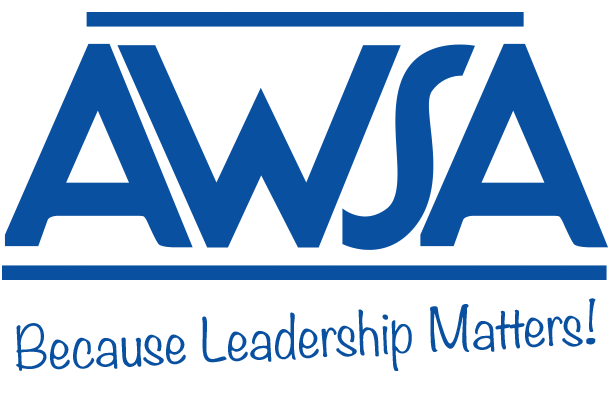Wisconsin’s Special Educator Induction Program Shows Promise in First YearBy Barbara Van Haren, PhD, Special Education Team, DPI Amidst the backdrop of nationwide staffing dilemmas, Wisconsin also finds itself grappling with unprecedented challenges in securing and retaining educators, as highlighted by DPI’s 2022 Education Preparation Program and Workforce Analysis Report. This report identified a critical trend: the state faces significant attrition rates among educators, particularly during the crucial junctures of program completion and the early years in the profession. Interestingly, according to the report, the highest number of educator preparation program completers by subject area is in special education. Yet, the subject area in which the most districts (74%) reported vacancies was special education and the largest shortage area based on licensure is cross-categorical special education, with 793 Tier I licenses with stipulations (LWS). Data showed almost half of Wisconsin’s new special education teachers drop out of teaching by year six, shedding light on the urgent need for sustainable retention strategies. For many years, research has pointed to induction support as a solution to retention. In 2004, Strong & Ingersoll identified that first-year educators who participated in a comprehensive set of induction activities were half as likely to leave the field as those who did not participate. As a professional development intervention, induction programs can help teachers cope with their new role, while building a sense of self-efficacy that may lead to retention (LoCasale-Crouch et al., 2012; Fresko & Alhija, 2014; Smith & Ingersoll, 2004). Ronfeldt and Kiel (2017) found that when first year teachers participated in induction, it resulted in less teacher migration and attrition. In September 2023, DPI launched the Wisconsin Special Educator Induction Program in partnership with the state’s 12 Cooperative Education Service Agencies (CESAs) and with Individuals with Disabilities Education Act (IDEA) Discretionary Funds. To be eligible for participation, special educators must be in their first or second year of teaching or hold a License with Stipulations (LWS). The program includes six sessions of professional learning based on the High Leverage Practices (HLPs) and special education requirements; six coaching sessions rooted in Wisconsin coaching competencies; and six support network sessions utilizing Adult Social and Emotional Learning and a Problems of Practice Protocol. The program's initial implementation in 2023-24 has yielded promising results. In its inaugural year, up to 25 teachers from each CESA region of the state participated in the program for a total of 268 participants from 156 school districts. Of the 268 participants, 253 successfully completed the program. Almost 95 percent of new special educators who completed the induction program indicated a likelihood to remain in their current position or in the field of special education. Preliminary data from participating school district leaders was also positive. 73 school districts provided feedback, with 82 percent indicating that the induction program is very beneficial and participation in the program led to teacher retention. 100 percent of districts indicated a likelihood to participate in the program in the future. According to Joyce and Showers (2002), even with practice and feedback when learning new skills, only 5 percent of teachers actually continued to use those new skills when they returned to their classroom. Yet, when embedded coaching was provided, implementation was improved to 85-95 percent of participants. Wisconsin’s induction program participants identified that the combination of professional learning and coaching offered the most value to them as new educators. While many districts provide mentorship for new teachers, with more experienced teachers assisting in day-to-day navigation of their new role, Wisconsin’s induction program offered coaching to build the capacity of new teachers and support the application of their professional learning in the classroom. Coaching and mentoring can be complementary, yet separate, strategies for attracting and retaining novice educators. When all three components of an effective induction program are afforded to new special educators, the likelihood of greater effective classroom practices and increased student achievement prevails. Growth of teaching skills, engaging in professional learning, and collaboration with peers all help to overcome the challenges beginning teachers face, reducing their stress, and improving their practice (Wilcoxen et al., 2019; Smith & Ingersoll, 2004). After completing the Wisconsin’s induction program, participants felt more prepared to implement high quality instructional practices and collaboration skills and felt significantly more prepared in meeting special education requirements. Wisconsin’s Special Educator Induction Program is continuing in 2024-25 with a number of enhancements based on research and feedback from the previous year. First, the professional learning was revised to better align with updated HLPs and to embed more IEP development and implementation with greater application opportunities throughout the sessions. Coaching sessions will include classroom observation on a voluntary basis. In addition, the program will offer a second year of continued support and coaching for 2023-24 participants. Finally, because special education teachers are more likely to stay in schools with supportive administration (Albrecht, Johns, Mounsteven, & Olorunda, 2009; Jones, Youngs, & Frank, 2013), Wisconsin’s induction program will increase the involvement of district leadership to better support new educators. Special education leaders will have the opportunity to learn more about HLPs and special education requirements. For more information on participating in Wisconsin’s Special Educator Induction Program contact your local CESA and visit DPI’s webpage at Resources to Attract, Prepare, and Retain Special Educators and Related Services Providers. |
